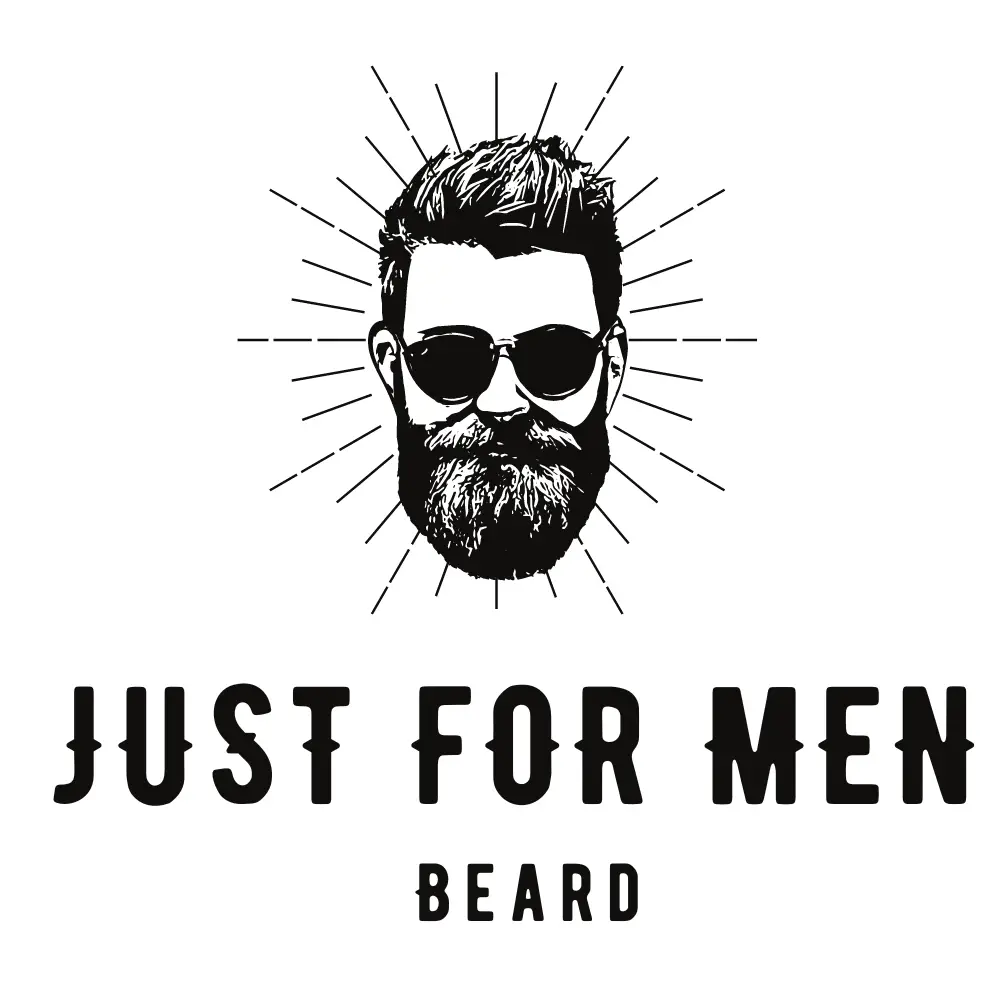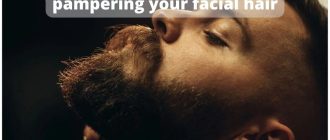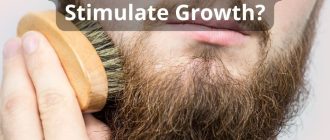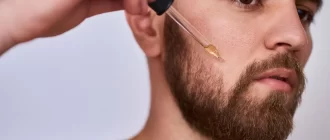A mustache gap is a noticeable space between the upper lip and the start of the mustache hair. It can be a bummer for men who want a more solid mustache. The gap can be caused by genetics, skin and hair type, and even grooming habits.
But, there’s hope! There are a bunch of ways to close the gap and get that fuller mustache you’re after. You can try using beard oil, switch up your styling game, or even go for hormone therapy.
With a little bit of patience and persistence, you too can say goodbye to that pesky gap and hello to the mustache of your dreams!
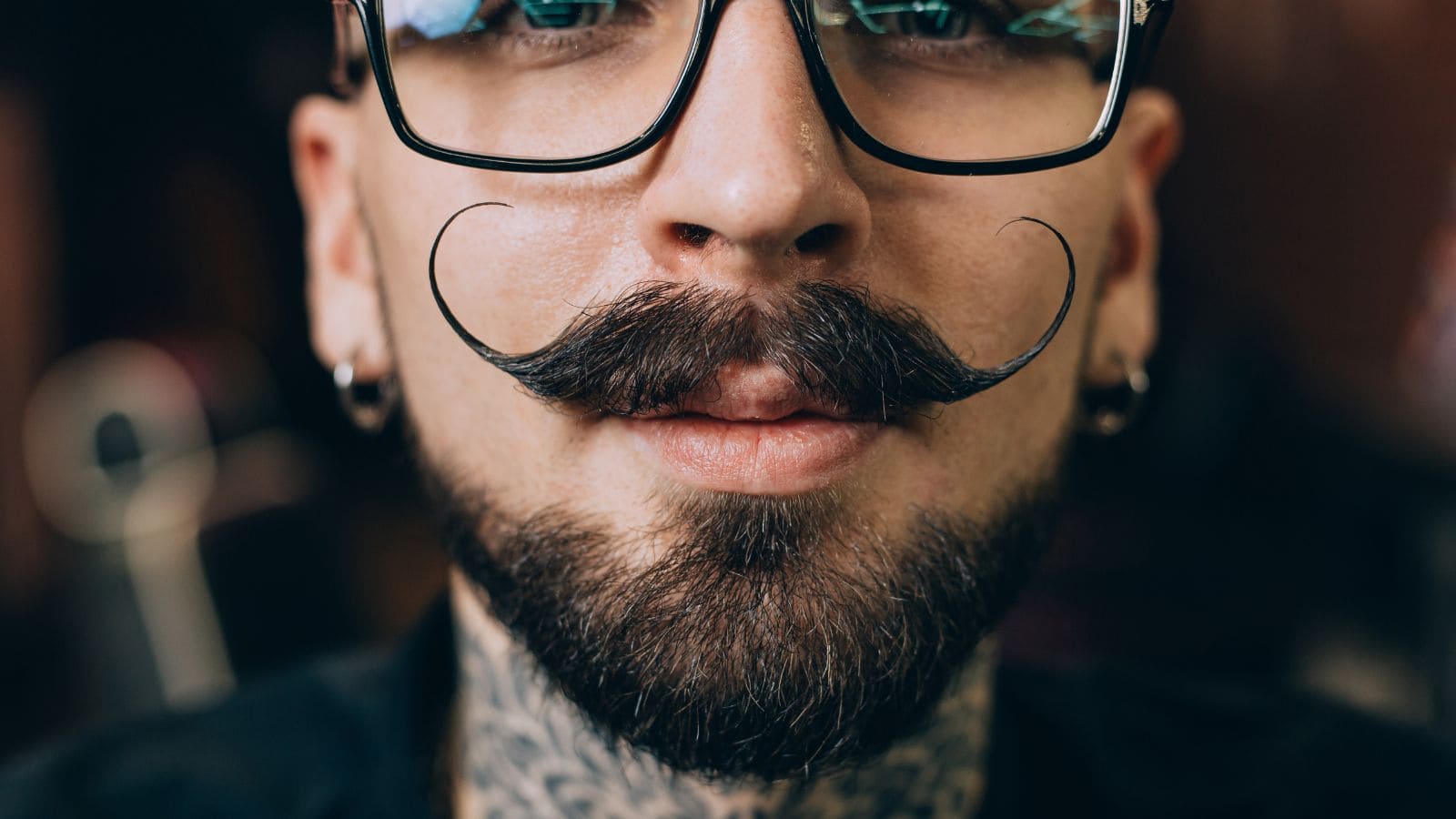
Facial hair growth
It is a complex and often unpredictable process. Many factors contribute to the growth patterns and thickness of mustache hairs, including genetics, hormones, age, and health. The rate and pattern of mustache hairs can vary greatly from person to person, leading to differences in mustache and beard thickness and fullness.
In some cases, mustache hairs may grow in patchy or sparse areas, creating a “gap” in the mustache. This gap can be frustrating and cause self-consciousness, but there are a variety of solutions available to help fill in the space.
One solution is to use beard oils or other hair growth products, which can help stimulate growth and make the mustache appear fuller.
Styling techniques, such as brushing and combing the mustache in a certain direction, can also be used to help disguise the gap and make the mustache appear more connected.
In more severe cases, hormone therapy may be recommended to help improve head hair structure and fill in the gap.

Gap mustache gap problems
A mustache gap refers to a patchy or sparse area in the mustache that leaves a visible space or “gap.” This can be a common problem for many men and can be caused by a variety of factors, including genetics, skin characteristics, and grooming practices.
Having a gap in the mustache can be a source of frustration and self-consciousness for those affected by it. The mustache gap can detract from the overall appearance of the mustache and may leave men feeling insecure about their patchy beard.
Ultimately, it’s important to be patient and persistent when trying to fill in a mustache gap. Finding the right solution for your individual needs and hairs type can take time and experimentation, but with dedication and perseverance, it is possible to achieve the desired result.
By maintaining a healthy diet, exercise routine, and stress-management practices, you can also support a healthy hairpiece and reduce the risk of a patchy beard.
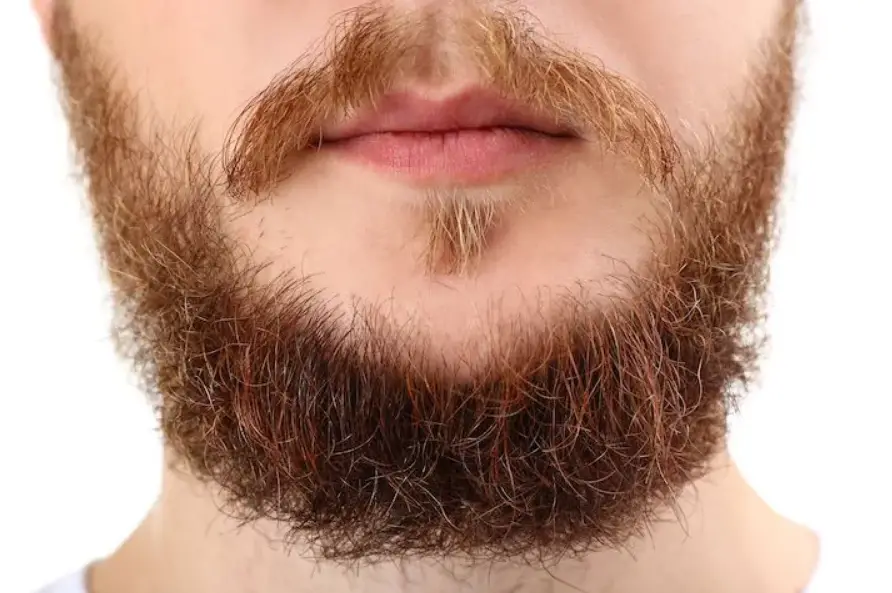
Causes of the mustache gap
The appearance of a mustache gap can cause sadness for some men.
Whether it’s due to genetics, hormonal imbalances, or poor grooming habits, several factors can contribute to the development of a patchy mustache.
Understanding the underlying causes can help men identify the best solution for closing the gap and achieving a fuller, more uniform mustache.
The causes of a mustache gap can be complex and multifactorial. Some of the most common factors that contribute to patchiness in the mustache include genetics, hormones, skin and mustache characteristics, and grooming practices.
So, the reasons for a mustache gap can be varied, and understanding the root cause is important to find the right solution.
And the key to filling in a mustache gap is to identify the cause and take the appropriate steps to enhance your mustache and fill in the gap.
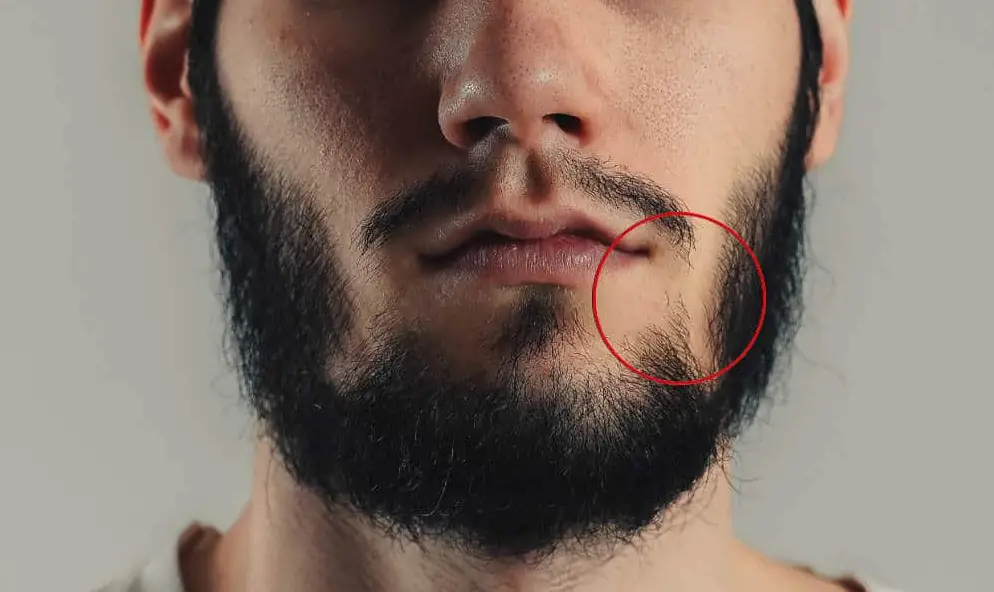
Genetics
Genetics plays a critical role in determining the pattern and thickness of facial hair, including the mustache style.
Some men are genetically predisposed to have a mustache gap, regardless of other factors. This is due to variations in the genes that control hairpiece structure and thickness, which can lead to patchiness and uneven growth patterns in an upper lip.
Hormones also play a crucial role in the growth and thickness of hair, including the mustache. Hormones such as testosterone, dihydrotestosterone (DHT), and estrogen can impact its growth and thickness.
For example, an increase in testosterone levels can lead to a fuller, thicker beard or mustache, while a decrease in testosterone levels can cause it to become thin and become patchy. Similarly, changes in estrogen levels can impact the growth and thickness of facial hair, leading to patchiness and gaps in some cases.
It’s important to note that hormonal imbalances can occur at any stage of life, and changes in hormone levels can occur as a result of aging, stress, illness, or medical treatments.
This is why it’s important to be aware of the potential impact of hormones on mustache growth and to seek professional advice if necessary.
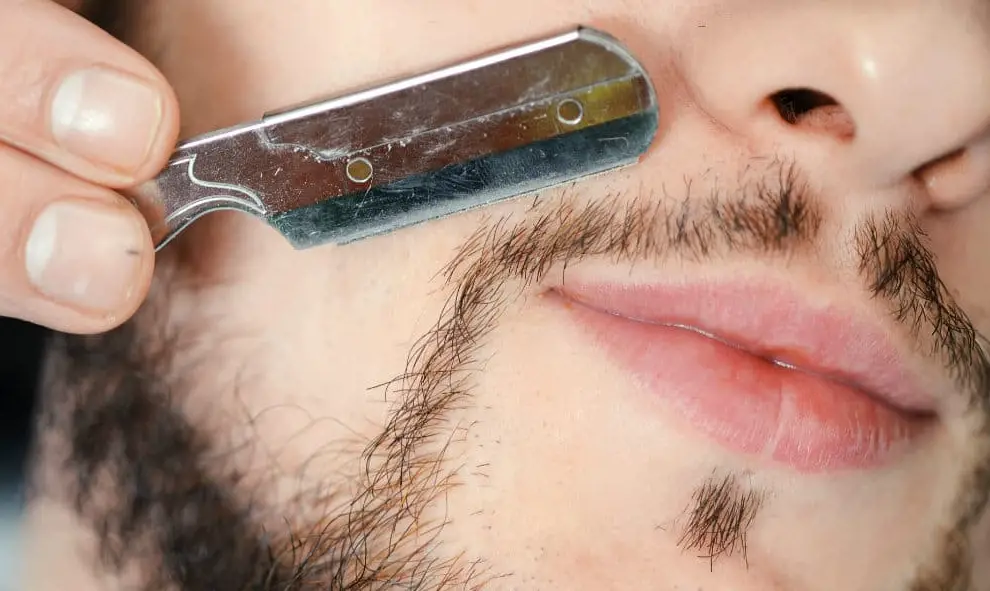
Hair’s density and growth direction
Additionally, genetics can impact the way hair grows, including the density and thickness of beard hair fibers.
When hair follicles are smaller, it can lead to thinner, patchier growth, and this genetic predisposition can make it difficult to achieve a full, thick mustache.
Furthermore, because of genetics, some men have a hairpiece that grows in different directions or a more random pattern.
This can cause upper lip hair to grow unevenly, leading to a gap in the mustache. It is also worth noting that certain medical conditions, such as alopecia, can cause hair loss and lead to patchiness in the mustache.
This is because the beard hair fibers are damaged, preventing the mustache from growing in its normal pattern.
In these cases, it may be necessary to work with a doctor or dermatologist to address the underlying medical issue to improve its growth in the mustache area.
Skin and hair type
These characteristics can also play a role in the growth of facial hair, including the mustache.
The oil produced by the skin, for example, can affect the growth and health of facial hair. Men with dry skin and hairpieces may experience a patchier or thinner mustache, while those with oily skin and hair may have a thicker, more robust beard or mustache.
For example, men with skin conditions such as psoriasis or eczema may experience patchy or slow-growing facial hair due to the irritation and inflammation caused by these conditions. Similarly, men who suffer from skin infections or who frequently use harsh chemicals on their skin may experience patchiness or slow growth in their facial hair and have a gap in the middle.
This can involve using a gentle, nourishing skincare routine, avoiding harsh chemicals and irritants, and seeking professional treatment for any skin conditions or infections that may be affecting beard and mustache gaps.

Grooming techniques
Finally, grooming practices are another factor that can contribute to the development of a mustache gap.
Men who over-grooming or trim their mustache hair too closely can cause patchiness and slow growth, as this can damage the hair follicles and prevent healthy mustache structure.
This can be especially problematic for men with naturally patchy or slow-growing facial hair, as over-grooming can exacerbate these existing issues and create a gap in the middle.
This can involve failing to wash or clean the beard and mustache regularly, which can lead to a buildup of oil, dirt, and bacteria that can clog the hair follicles and prevent healthy hairpiece structure.
It’s important to adopt a healthy grooming routine to promote healthy facial hair growth and avoid the development of a mustache gap.
This can involve washing and cleaning the beard regularly, using a gentle, nourishing beard or mustache oil to moisturize the hairpiece and skin, avoiding over-grooming or trimming too closely, and using boar bristle beard brush.
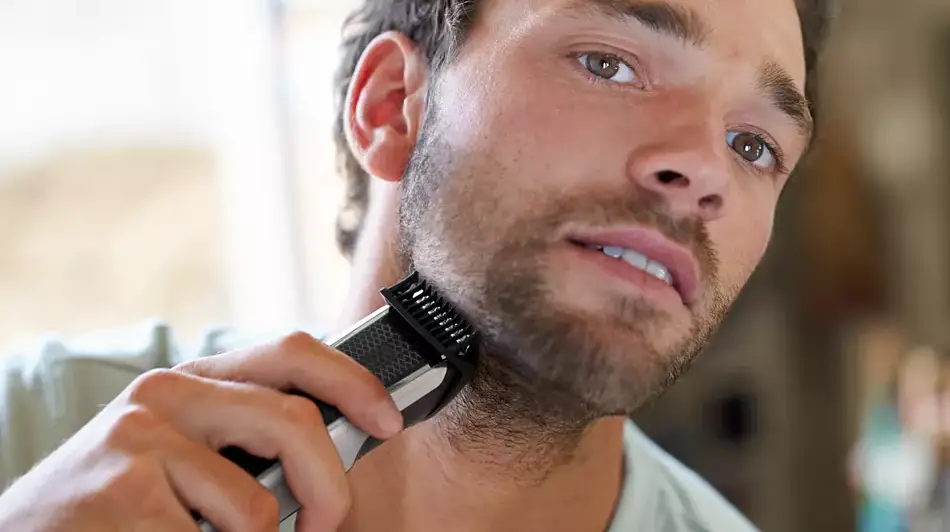
Available solutions to fix a mustache gap
Available solutions to fix hair-related disorders, in particular, a mustache gap vary, but some of the most popular methods include beard oils, styling techniques, hormone therapy, and beard transplants.
Here are some solutions to make your mustache grow thicker.
Beard oils
Beard oils can help to promote healthy hair growth by moisturizing the skin and hair follicles.
This can help to improve its density and reduce patchiness in the mustache.
By choosing the right oil that contains natural ingredients, such as tea tree oil or argan oil, men can help to support their facial hair growth and reduce the appearance of a gap in their mustache.
Styling techniques
Styling techniques can also be used to help conceal a mustache gap.
By choosing a beard style that helps to cover the gap, men can effectively minimize the appearance of patchiness in their mustache.
Well-groomed beard styles can also help to make a mustache gap less noticeable. So it’s important to choose from beard styles and to invest in quality grooming tools, such as a good beard trimmer, and products to keep your beard looking its best.
Hormone therapy
For some men, hormone therapy may be a solution to their mustache gap.
This type of therapy can help to regulate hormone levels, which in turn can impact the mustache growth and density of facial hairs.
By working with a doctor to determine the underlying cause of the gap in their mustache, men may be able to find a solution that works to make a mustache grow healthy.
Beard transplants
Finally, beard transplants can provide a more permanent solution to a mustache gap.
During this procedure, hair follicles or beard fillers are taken from one part of the body and transplanted into the beard and mustache area, helping to fill in the gap in the mustache and creating a fuller, more uniform appearance.
While this can be an effective solution, it’s important to understand that transplants can be a costly and invasive procedure and should only be considered as a last resort after other options have been exhausted. As a more budget-friendly version, you could use a fake mustache to make your mustache thicker.
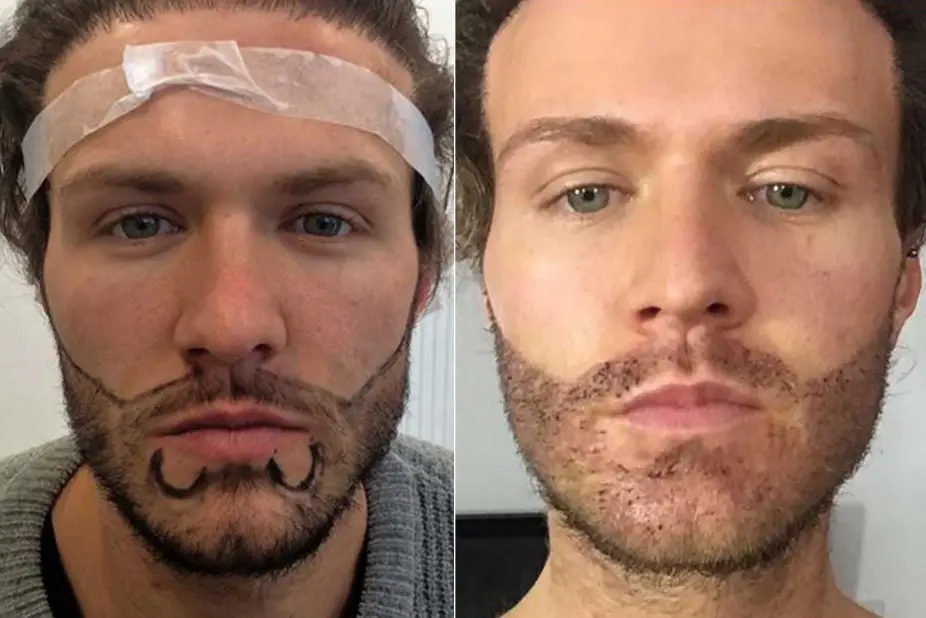
Tips for closing the gap
It is important to be patient and persistent in your efforts to close the gap in your mustache.
This may require some trial and error, but with the right approach and the right products, it is possible to achieve a fuller, healthier, and more uniform mustache.
So, if you are looking to close a gap in your mustache, be sure to stay committed, stay focused, and keep trying until you find the solution that works best for you.
Here are some tips and tricks for closing the mustache gap:
Patience and the right approach
Closing a mustache gap takes time and patience, but with the right approach, it can be done.
One of the first things to consider is finding the right solution for your specific needs.
This may involve trying different products, such as beard balm or beard fillers, styling techniques, beard dye, or even exploring hormone therapy.
Beard care routine
To fix a mustache gap, it is important to have a consistent and effective beard care routine.
Here are some tips to follow.
- Cleanse
Wash your beard regularly with a beard shampoo and conditioner to keep it clean and healthy.
- Nourish
Use beard balm or oil to moisturize your beard and prevent dryness. This can help improve beard growth and reduce patchiness.
- Brush or comb
Regularly brushing or combing your beard can help distribute natural oils and stimulate beard growth. Also, be sure to comb or brush your mustache after applying the beard wax to help distribute it evenly and create a smooth, uniform look.
Use a wide-toothed comb or boar bristle brush to avoid damaging the hair.
- Trim
Trimming your beard regularly can help improve mustache styles and their appearance. Shave hair underneath your mustache and beard to keep it looking neat.
However, be careful not to trim too much and avoid using a razor, as this can lead to patchiness.
- Stay patient
Growing a thick, full beard takes time, so be patient and avoid getting discouraged. Persistence and consistency in your care routine are key.
It’s also important to find the best products that work for you and to seek professional advice if needed. By following a consistent and effective mustache care routine, you can help reduce the gap in your mustache and achieve a fuller, healthier beard.
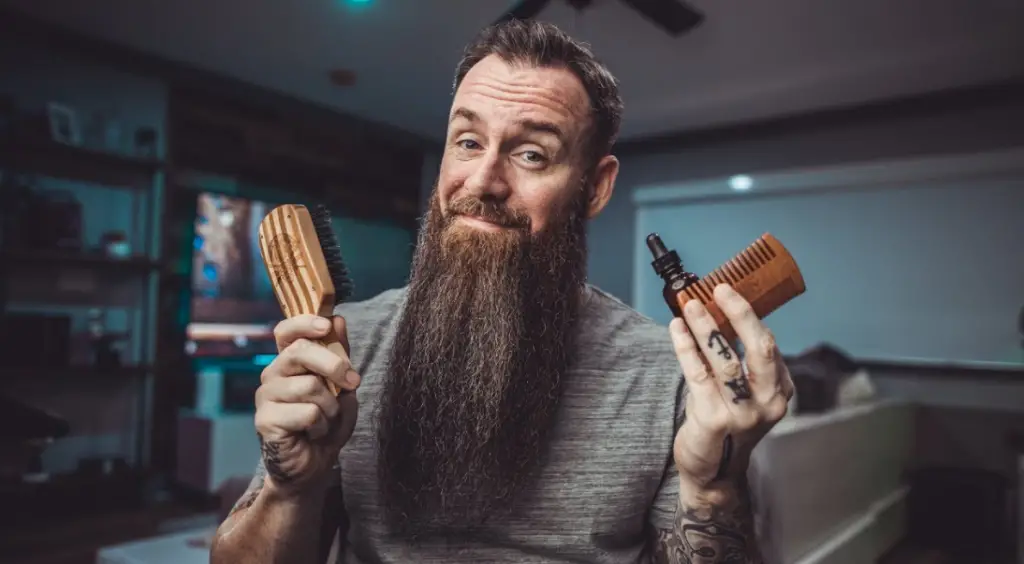
Best products for styling
To style a mustache with gaps, you can use products such as mustache wax, beard oil, and styling products that contain natural ingredients such as beeswax and argan oil.
Using beard wax can be an effective solution for covering gaps in a mustache. The beard wax provides a strong hold that helps to mold and shape the mustache, filling in any sparse areas.
When choosing a beard and mustache wax, look for one that provides a strong hold and is easy to work with. It’s also important to apply the hair wax evenly and to use enough to cover the gap, but not so much that it looks heavy or greasy.
Regularly using good-quality mustache wax as part of your grooming routine can help to mask gaps and create the appearance of a fuller, thicker mustache.
The right product can help to shape, tame, and fill in the gaps in the mustache. It is important to choose a product that provides hold without being too stiff or crunchy, as this can lead to further breakage and patchiness.
When using styling products, it is also important to use them in moderation and avoid over-styling, as this can damage the hairpiece and worsen the gap. It’s recommended to do a patch test before using a new product and to seek advice from a professional if necessary.
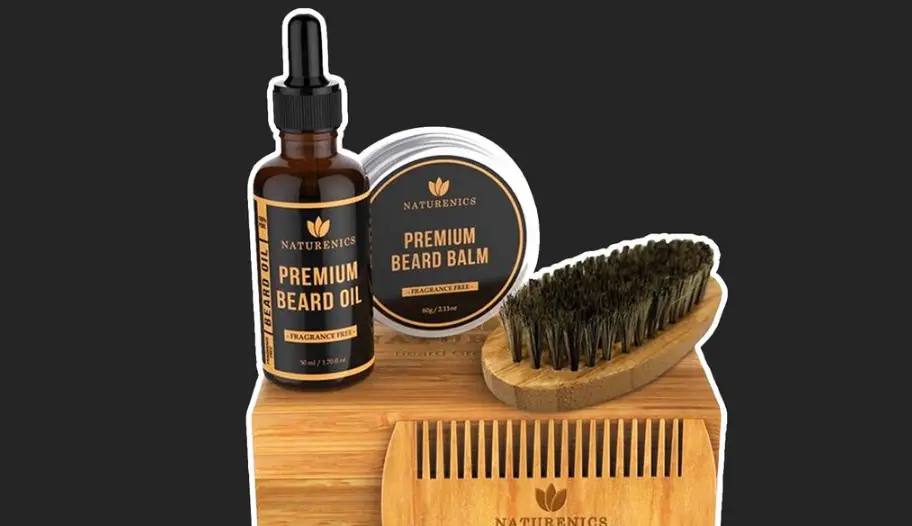
Style your mustache
Here are some ideas for mustache styles to cover mustache gaps.
The pencil mustache, which is a thin line of hairpiece above the upper lip, and the chevron mustache, which is a thick and triangular shape that covers the entire upper lip.
A pencil mustache is a thin, narrow style of mustache that is trimmed to a very precise line. To cover gaps in a pencil mustache, one option is to simply grow out the hairpiece in the gap until it reaches the same length as the rest of the mustache.
A handlebar mustache is a distinctive style that involves twisting and grooming the hairsbreadth at the ends of the mustache into a curled shape that resembles the handlebars of a bicycle, the option is to grow the mustache longer and use the added length to cover up any gaps.
Once it is long enough, you can use styling products and tools to twist and shape the ends into a handlebar mustache.
The chin strap beard style, which involves having a thin strip of hair running along the jawline and connecting to the sideburns, can be a solution for fixing a mustache gap. By having hair growth in this area, the gap can be filled and create a more cohesive, full appearance for the mustache.
How long does it take for a mustache to fill in?
The amount of time it takes for a mustache to fill in can vary greatly depending on factors such as genetics, hormone levels, and grooming practices.
On average, it can take anywhere from a few months to several years for a mustache to fill in. Some men may see noticeable improvement within a few weeks of starting a beard care routine, while others may take several months or more to see significant results.
It is important to be patient and persistent, as filling in a mustache gap can take time, and the best results may not be achieved overnight.
FAQ
Why is there a gap in my mustache?
Several factors can contribute to a gap in a mustache, including genetics, hormones, skin and hairpiece characteristics, and grooming practices. Some men are predisposed to having a patchy mustache due to genetics, while changes in hormone levels can also impact the growth and thickness of facial hair.
Men with dry skin may experience slower or patchier growth, while over-grooming or trimming the hairpiece too closely can also lead to patchiness in the mustache.
What is a split mustache called?
A split mustache is sometimes referred to as a “mustache gap.” This refers to a gap or a break in the mustache that can leave bare skin visible. The mustache gap can be caused by various factors, including genetics, hormones, etc.
Conclusion: achieving the mustache of your dreams
Achieving the mustache of your dreams can be a challenging but rewarding journey.
It requires patience, persistence, and a commitment to a regular beard care routine. From beard oils and styling techniques to hormone therapy and beard transplants, there are many solutions available to help close the gap in your mustache.
Finding the right solution for you will depend on your specific needs, hair type, and lifestyle. With the right approach and dedication, you can have the thick, full, and stylish mustache you have always wanted and improve your beard growth.
Read also: Useful information about 1mm beard: styles and techniques
